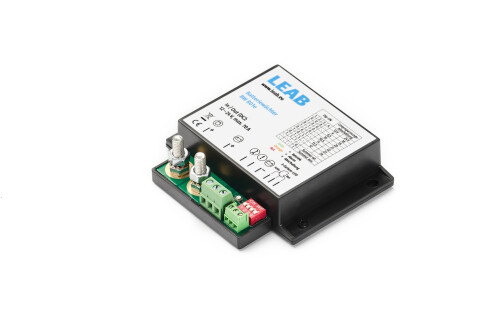
Our Battery Watch BW 801e, one of our battery monitors
In the field of undervoltage protection, we offer a variety of high-quality products that prevent deep discharge of batteries. In this article you will learn how and why undervoltage protection can significantly increase operational safety.
The low-voltage protection (also: undervoltage protection) refers to a specific function of the battery. It ensures that the voltage does not fall below a certain value. If the voltage falls below this value, the battery is said to be deep discharged.
Low-voltage protection or deep discharge protection for uninterruptible power supply is an important safety function of batteries. The one question that every owner or user of a special-purpose vehicle knows is: Is the power (stored in an auxiliary battery) needed to perform the job sufficient enough?
In general, there is enough power to do the job. Most modern battery systems offer sufficient capacity for most common applications. What is often forgotten are consumers that constantly take a little power from the battery, but over a long period e.g. radio or laptop.
Even electronic devices that have been "forgotten" to turn off and therefore are working in standby mode consume energy - which may be lacking elsewhere. If the starter battery and the auxiliary battery are not properly isolated, the discharged auxiliary battery may also drain the starter battery.

Our Battery Watch BW 801e, one of our battery monitors
In many cases, a deep discharge can damage the battery and it can no longer be charged or used. This is annoying collateral damage: The only way to get the motor running again is with jump leads and outside help.
The installation of a cut-off relay helps. It is installed between the starter battery and the auxiliary battery and disconnects the second battery from the starter battery when the engine is not running. This ensures that there is always enough energy to start the vehicle.
In order to know when to disconnect the two battery systems and when to couple them, a relay is guided by the ignition, for example: "Ignition on" - the batteries are connected and charged by the alternator. "Ignition off" means the batteries are disconnected and the starter battery is protected from discharge.
Another technology to protect sensitive consumers are so-called battery monitors - such as our battery watch BW 801e.
When the end-of-discharge voltage is reached, our battery watch disconnects the loads from the battery and only switches on again when a minimum voltage is reached.
Our battery watch continuously measures the voltage of the auxiliary battery and decides on that basis whether it is necessary to switch off the consumers or not. This function protects the battery and the consumers at the same time.
Before a "hard" shutdown may lead to problems, an acoustic signal is given so that consumers can be switched off and shut down manually. It is also possible to switch off strong consumers in order to be able to concentrate the remaining capacity on important devices - for example a radio.
A brief drop of battery voltage, for example due to a high, short-term current drain, does not irritate the battery watch. The delay built in as standard prevents a switch-off from being triggered accidentally.
Those who have expensive electronics on board - as is the case with many special vehicles - therefore rely on the combination of both technologies: The cut-off relay protects the starter battery and ensures that the auxiliary battery(ies) is/are charged by the alternator. The battery monitor allows continuous monitoring of the battery voltage and warns acoustically of low-voltage or automatically initiates a protective shutdown of sensitive consumers.